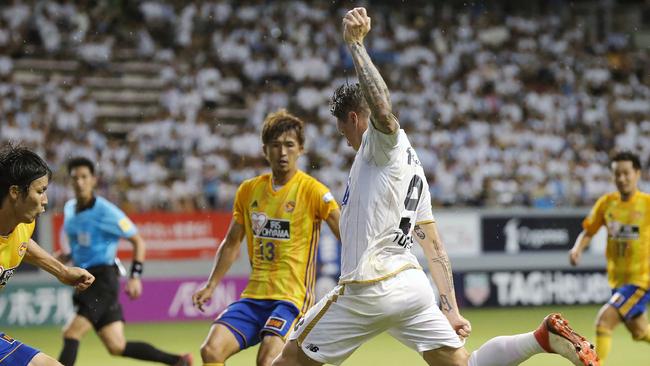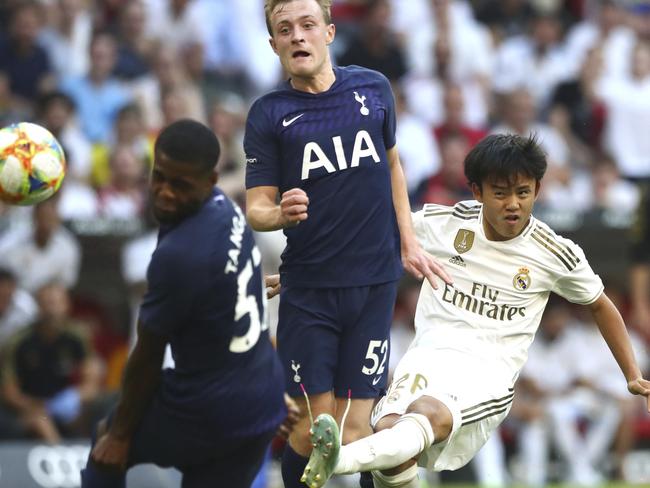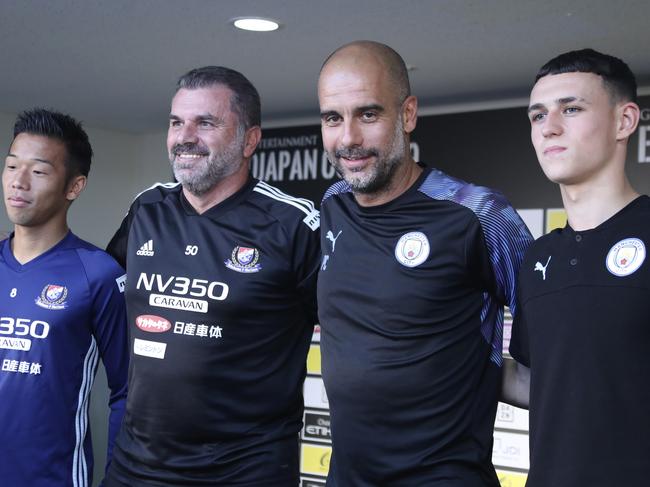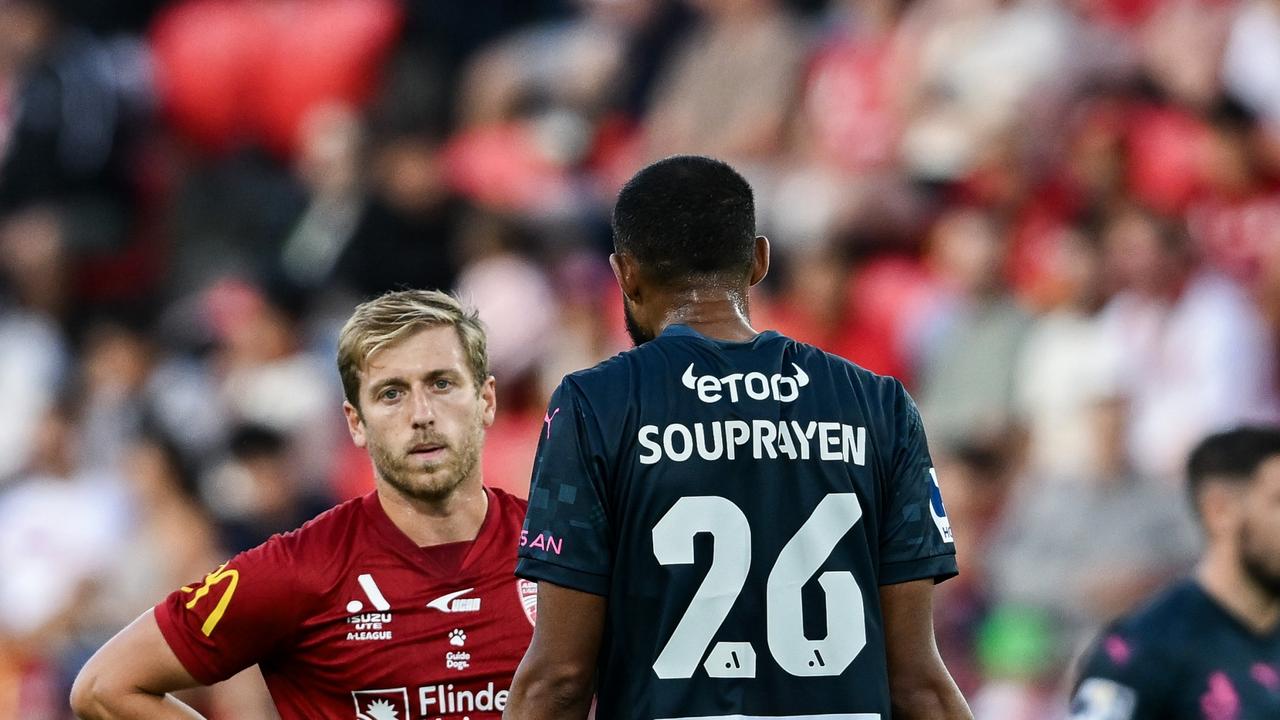Studs Up: Japanese football’s mass growth has lessons for Australia, as football enters a new era
Australian football is approaching a defining period as the A-League prepares for independence and there’s plenty of lessons to be learned from the growth of Japan’s J1 League, writes David Davutovic.

A-League
Don't miss out on the headlines from A-League. Followed categories will be added to My News.
As the A-League prepares to forge a new path forward in the wake of independence, Japan is emerging as a country whose progress Australia should follow.
The J1 League (formerly J. League) is going gangbusters and Ange Postecoglou is playing a central role, with his Yokohama F Marinos in title contention in the strongest season yet.
EXCLUSIVE: Q&A WITH AUSSIE COACH JUSTIN LANGER
DRAFT: GARY BUCKENARA’S TOP 30 PROSPECTS
BLOW: SOCCEROOS HIT BY TWO KEY INJURIES
The league will only grow, with ambitious J1 League chiefs citing the emergence of big clubs as integral to plans of becoming ‘Asia’s Premier League’.
Bold but strategic growth has turbocharged Japan’s domestic competition, aided by a mega $2.9 billion (US$2 billion) 10-year deal with subscription video streaming service DAZN.
The J1 League has incentivised prizemoney distributions, which have doubled since the DAZN deal — the champion claims $4.36 million (US$3 million), runner up $1.74 million (US$1.2 million) and third $872,000 (US$600,000) — to encourage growth in a league with relegation and minus a salary cap.

“In the J1 League, in a good way or bad way, many clubs are almost the same size. We don’t have the big clubs like Manchester United or Liverpool,’’ J. League international relations chief Kei Koyama told the Herald-Sun.
“But in order to compete in the global competition, maybe we need a big club, so we are trying to create competition among the clubs in a financial way.
“Before we distributed equally to all the clubs, but we changed the policy to distribute more money to the top clubs to try and create bigger clubs.”
BROADCAST RICHES
The DAZN deal prompted the prizemoney increase, with the broadcaster inspired by the J1 League’s growth and vision, which is backed by a 100-year strategy.
The deal enabled J1 League clubs to sign Fernando Torres and Andres Iniesta, while devising longer term plans.

“We got more exposure because of Torres, Iniesta. We get a lot of inquiries for broadcast right and we are monitoring how the J1 League goes online and news, the number is growing,’’ Koyama said.
“Domestically almost all the Vissel Kobe’s games are sold out, even away. Because of Iniesta, so a very positive effect.
“This (the DAZN deal) is very important, 10 years long term relationship and DAZN is investing more money than the current value of the J1 League, so it’s a commitment to develop together.
“Not just buying the rights just to invest to increase the value of the J1 League, so we have been working very close with DAZN to promote and how we can get more fans not only to get more subscribers, but how we can acquire more fans.”
ASIAN STRATEGY
Premier League-mad South-East Asia is a prime target on and off the field, having already penetrated Thailand after signing and MOU which has stars like Chanatip Songkrasin and Teerasil Dangda feature in the J1 League.
“A 100 year vision is a very long term goal and vision so we’re now creating a mid (range) vision,’’ Koyama said.
“Since Japan is the centre of Asia, and we’re very close to other Asian countries geographically and also mentally, we are trying to kind of be the Premier League of Asia.
“The J1 League is trying to be the number one in Asia. The market size of Asian football is getting bigger. Our concept is growing together with Asia.
“So the top players in each league like Thailand, Indonesia, Vietnamese league is dreaming of playing in the J1 League and everyone in Asia is watching the J1 League.
“The idea is to grow together with Asian leagues. Because the nowadays Europe is dominant in the football world, so we need to bring back the Asian money in the players also to the Asian Football to help it grow.
“We started this (expansion) project in 2012, when the J1 League was facing a challenging time because of the earthquakes. (Crowds) were going down, the economy is stable but not growing a lot, so we needed to think about something new and find new markets to grow further.
“Since then we have especially focused on South-East Asia as a market — Thailand, Indonesia, Vietnam, because the economy and populations are growing and they are football nations.”
THREE TIERS
Debate rages as to whether an Australian second division should be full-time or semi-professional.
Since the birth of the A-League in 2005, Australian football has never had a strategic plan to grow the professional game — the most recent process, born less from strategy than sentiment, drew as many as 15 bids, despite just two licenses issued.
A second division is likely to attract unprecedented levels of interest, and with promotion-relegation inevitable, surely a third tier will too eventuate.
J2 (which started in 1999) and J3 (2014) were both born from Japan’s grand vision, which aims to have 100 professional clubs (they’re up to 58), after the J1 League started in 1993.
J3 — which also receives prizemoney — has a strong tie-in to the Japan Football Association and fields three J1 League Under 23 sides, with each club needing to have minimum five professional players contracted.
Aided by a strong high school system, the third tier has enabled a number of players progress up the leagues and into Japan’s flourishing national teams.

“I’m not sure if we will divide J3 into Conferences, but the idea is still to add more J1 League clubs,’’ Koyama said.
AUSSIE FLAVOUR
The feats of ex Socceroos boss Postecoglou are being lauded abroad, with Manchester City boss Pep Guardiola and star attacker Raheem Sterling the latest to praise Yokohama after their recent friendly, in which they had 58 per cent possession against City although going down 3-1.
"Yokohama played some incredible football and they were an incredible test for us. I knew how good they were and it was tough for us," Guardiola said.

Japan coach Hajime Moriyasu and a host of other national coaches have visited training HQ to observe Postecoglou’s work, with Yokohama sitting second, just three points off leaders FC Tokyo.
“We’ve had Moriyasu down a few times, we’ve had both his assistants, the U22 Olympics coach, U20, U17 (coaches) have all come to watch us train and spoken with us — really inquisitive,’’ Postecoglou said.

“It’s tough because every week is a challenge. You’re playing against good players, good teams, disciplined teams in massive stadiums with 20,000-30,000 people and you know that we're gona have between 3000-5000 travelling supporters every game.
“In Japan, when they have a plan, they stick to it.”
Originally published as Studs Up: Japanese football’s mass growth has lessons for Australia, as football enters a new era


